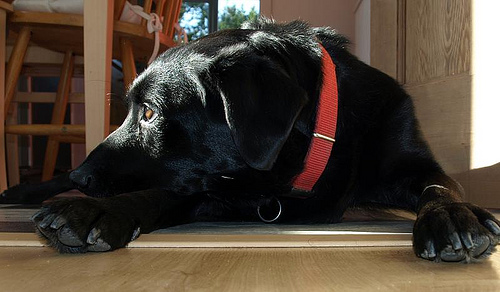
Dogs and cats have two “anal sacs,” structures that are located on either side of the anus in approximately the four o’clock and eight o’clock positions below the anus. These sacs are lined with specialized cells that secrete a foul-smelling liquid that enables the animal to mark its territory and identify itself to other animals.
While anal sacs problems are rare in cats, dogs frequently suffer from anal sac impactions, inflammation, abscesses, and occasionally cancer. Any of these afflictions can cause a great deal of discomfort for your pet.
How do the anal sacs empty?
The anal sacs empty naturally when the anal sphincter contracts during defecation. They may also empty when the animal is frightened or excited, due to involuntary anal sphincter contractions.
What should anal gland secretions look like?
Anal glands are typically a watery yellow-brown fluid. However, if the sacs are not emptied on a regular basis, the secretions become thick and gritty, and it becomes even harder to empty the anal sacs. Failure of the anal sacs to empty normally is known as impaction. Blood and/or pus in the secretions indicate the presence of infection.
Why does my have impacted anal glands?
There are a variety of reasons for anal gland impaction:
• Anal sac disease occurs much more frequently in smaller breed dogs than large breed dogs (possibly due to their smaller emptying ducts)
• Change of frequency or consistency of bowel movements (e.g. due to diarrhoea, constipation, or diet change)
• Overactive anal gland secretion
• Poor muscle tone
How can I recognise signs of anal sac disease?
The signs of anal sac disease are fairly distinctive and include:
• Scooting the hind end along the ground
• Straining to defecate
• Frequent scratching or licking of the hind end
• Pus in the affected region
What should I do if my dog show signs of anal sac disease?
While it is possible to empty the anal glands yourself, by squeezing both sides of the anal region with a tissue, this may lead to irritation or rupture of the anal sacs. Making an appointment with veterinarian is recommended. Your dog may not even have a problem with its anal glands.
Dogs with parasitic worm infestations like tapeworm often show similar symptoms. The veterinarian can safely express the anal glands and diagnose problems such as infection or cancer.
What is the treatment for anal sac disease?
The treatment for anal sac disease will depend on the extent of disease. Manual emptying by the veterinarian may be enough to improve your pet’s condition. Infections should be treated with antibiotics, either topically or systemically. Your veterinarian may also choose to flush the affected sacs, and in severe recurring cases, remove the anal glands.
Treatment at home can be effected by increasing the fibre and bulk content in the diet. This will increase the bulk of the dog’s faeces, promoting more efficient emptying of the anal sacs during bowel movements. Also, remember to worm your pet regularly!
Should I have my dog’s anal glands emptied regularly?
Routine expression of healthy anal glands is not advised, since it can lead to inflammation of the anal sacs if done incorrectly. If you dog has an obvious impaction (it’s scooting along the ground), it should have its sacs emptied. If the problem is occurring all of the time, consult your veterinarian about further treatment.
(photo: yosser)